Difference between Sony Xperia T and Xperia ZL
Key difference: The Sony Xperia ZL is very similar to its counterpart the Xperia Z; however, it differs in some aspects and is also believed that it will be offered for a lower price compared to the Z. Sony has managed to make the ZL even smaller and more compact compared to the Z. The Sony Xperia T is another model by Sony that was released in August 2012. It was one of the first few models that Sony has released after its break-up with Ericsson. It is Sony's first smartphone built on Qualcomm's Snapdragon S4 platform.
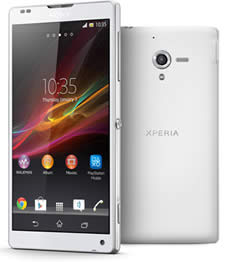 Smartphones have taken over the world! It has become a trend, a necessity and a way of life. They have made it easier to do everything on the go, from e-mailing, video conferencing, to writing up a report or a project. There isn’t anything you cannot do these days with a smartphone. But alas, similar to all technological devices, the software and features start to become outdated as new features and software are developed and released. That is how we end up with new variants of older models such as the Sony Xperia T and Xperia ZL.
Smartphones have taken over the world! It has become a trend, a necessity and a way of life. They have made it easier to do everything on the go, from e-mailing, video conferencing, to writing up a report or a project. There isn’t anything you cannot do these days with a smartphone. But alas, similar to all technological devices, the software and features start to become outdated as new features and software are developed and released. That is how we end up with new variants of older models such as the Sony Xperia T and Xperia ZL.
The Sony Xperia ZL is very similar to its counterpart the Xperia Z; however, it differs in some aspects and is also believed that it will be offered for a lower price compared to the Z. Sony has managed to make the ZL even smaller and more compact compared to the Z. The ZL maintains the 5-inch display in the dimensions 131.6 x 69.3 x 9.8 mm. The ZL offers the same processor, internal storage capacity, RAM and software. The ZL is also available with 4.1 Jelly upgradeable to v4.2. The ZL is also slightly heavier than the Z but it does not make that big of a dent on the design.
The major difference is ZL does not offer the dust and water resistance that is boasted by the Z. However, it does offer shatter-proof sheet and scratch-resistance glass on the front. The back isn’t the glass that is available in the Z but has a matte or textured finish, making it easier and more comfortable to hold. The ZL also has slight differences in button and SIM slow placement. The SIM and microSD card slots are placed on the bottom lower of the back panel, while in the Z the slots are placed above the power button on the right hand side. The ZL also offers a dedicated camera button which is not available in its big brother. The ZL also lacks contact points which are available with the Z. The contact points allow the phone to be connected to a charging dock that is sold separately. The placement of the front camera also differs. The front camera in the Z was located on left-hand corner, while in the ZL it is located in the right-hand corner. However, this does not make a difference when using the phone for video conferencing. Two new features that the ZL boasts is infrared/IrDA functionality and one-touch mirroring. The IR feature allows the phone to be used as a remote with any device that supports IR and one-touch mirroring allows the phone to send, receive and play audio and video files by touching another device that supports the feature. The ZL has yet to be launched and the price has also not been fixed for the device.
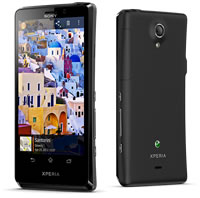 The Sony Xperia T is another model by Sony that was released in August 2012. It was one of the first few models that Sony has released after its break-up with Ericsson. It is Sony's first smartphone built on Qualcomm's Snapdragon S4 platform. It features a 4.55 inch screen with a resolution of 720 x 1280 pixels. It runs on a Dual-core 1.5 GHz Krait Qualcomm MSM8260A Snapdragon with 1 GB of RAM. It features Android Ice Cream Sandwich (v4.0.4) out of the box but is upgradeable to Jelly Bean (v4.1).
The Sony Xperia T is another model by Sony that was released in August 2012. It was one of the first few models that Sony has released after its break-up with Ericsson. It is Sony's first smartphone built on Qualcomm's Snapdragon S4 platform. It features a 4.55 inch screen with a resolution of 720 x 1280 pixels. It runs on a Dual-core 1.5 GHz Krait Qualcomm MSM8260A Snapdragon with 1 GB of RAM. It features Android Ice Cream Sandwich (v4.0.4) out of the box but is upgradeable to Jelly Bean (v4.1).
The phone also has a 13 MP primary camera with a 1.3 MP front camera. The phone is powered by a non-removable Li-Ion 1850 mAh battery. The phone also comes with pre-installed Sony apps called Walkman, and Movies. These are part of a pre-loaded software suite that allows for consuming and sharing a vast library of multimedia content.
Sony Xperia T has gotten very popular as it had been featured as James Bond's phone in the 2012 film, Skyfall. In fact, in some European countries, especially the UK, the phone is actually marketed as the Bond Phone.
The information for the detailed table about the two phones has been taken from the Sony Mobile website, and GSMArena.com.
|
|
Sony Xperia ZL |
Sony Xperia T |
|
Launch Date |
April 2013 |
August 29, 2012 |
|
Company |
Sony Mobile |
Sony Corporation |
|
Size |
131.6 x 69.3 x 9.8 mm |
129.4 x 67.3 x 9.4 mm |
|
Display |
1920x1080 pixels, (~441 ppi pixel density) |
TFT capacitive touchscreen, 16M colors |
|
Screen |
5 inch scratch-resistant TFT |
720 x 1280 pixels, 4.55 inches (~323 ppi pixel density) |
|
Protection |
Shatter-proof sheet on scratch-resistant glass. |
Shatter proof and scratch-resistant glass |
|
Weight |
151 g (5.33 oz) |
139g |
|
2G Network |
GSM 850 / 900 / 1800 / 1900 - C6502, C6503, C6506 |
GSM 850 / 900 / 1800 / 1900 |
|
3G Network |
HSDPA 850 / 900 / 1700 / 1900 / 2100 - C6502, C6506 HSDPA 850 / 900 / 2100 - C6503 |
HSDPA 850 / 900 / 1700 / 1900 / 2100 |
|
4G Network |
LTE 700 / 850 / 1700 / 1900 / 2100 - C6506 LTE 800 / 850 / 900 / 1800 / 2100 / 2600 - C6503 |
No |
|
GUI |
Sony UI |
Timescape UI |
|
CPU speed |
1.5 GHz Quad-core Krait |
Dual-core 1.5 GHz Krait |
|
GPU |
Adreno 320 |
Adreno 225 |
|
OS |
Android OS, v4.1.2 (Jelly Bean), planned upgrade to v4.2 (Jelly Bean) |
Android OS, v4.0.4 (Ice Cream Sandwich), planned upgrade to v4.1.2 (Jelly Bean) |
|
Chipset |
Qualcomm MDM9215M / APQ8064 |
Qualcomm MSM8260A Snapdragon |
|
RAM |
2GB |
1 GB RAM |
|
SIM Size |
microSIM |
microSIM |
|
Internal Memory |
Up to 16 GB |
16 GB |
|
Expandable Memory |
up to 32 GB |
Expandable up to 32 GB |
|
Sensors |
Accelerometer, gyro, proximity, compass |
Accelerometer, gyro, proximity, compass |
|
Connectivity |
4G LTE (100 mbps), GPS, GLONASS, USB, Bluetooth, NFC, Wi-Fi, DLNA and MHL. |
USB High speed 2.0 and Micro USB support, WiFi and WiFi Hotspot functionality, DLNA Certified, aGPS, WebKit web browser with Pan & zoom, Bluetooth technology, Native USB tethering, NFC, HDMI via MHL support, Synchronization via Exchange ActiveSync, SyncML, Microsoft, eCompass, Smart Connect |
|
Data |
GPRS, EDGE, WLAN, Bluetooth, NFC, Infrared port and USB |
GPRS, EDGE, WLAN, Bluetooth, USB, NFC |
|
Speed |
HSDPA, 42 Mbps; HSUPA, 5.76 Mbps; LTE, Cat3, 50 Mbps UL, 100 Mbps DL |
HSDPA, 42.2 Mbps; HSUPA, 5.76 Mbps |
|
WLAN |
Wi-Fi 802.11 a/b/g/n, dual-band, Wi-Fi Direct, DLNA, Wi-Fi hotspot |
Wi-Fi 802.11 a/b/g/n, dual-band, Wi-Fi Direct, DLNA, Wi-Fi hotspot |
|
Bluetooth |
Bluetooth v4.0 with A2DP |
Yes, v3.1 with A2DP |
|
USB |
microUSB v2.0. |
Yes, microUSB v2.0 (MHL) |
|
Primary Camera |
13 megapixel Exmor RS camera with Auto focus and flash |
13 MP, 4128x3096 pixels, autofocus, LED flash |
|
Secondary Camera |
2 MP 1080p Exmor R |
1.3 MP, 720p@30fps |
|
Video |
HD video recording (1080p) at 30fps, continuous autofocus, video light, video stabilizer |
Yes, 1080p@30fps, video stabilization |
|
Camera Features |
|
|
|
Sound Enhancement |
xLoud Experience |
xLOUD Experience – audio filter technology Active noise cancellation with dedicated mic |
|
Audio supported formats |
MP3/eAAC+/WMA/WAV/Flac |
MP3/eAAC+/WMA/WAV/Flac player |
|
Video supported formats |
MP4/H.263/H.264/WMV |
MP4/H.263/H.264/WMV player |
|
Battery Capacity |
Non-removable 2370 mAh Li-Ion battery |
Non-removable Li-Ion 1850 mAh battery |
|
Available Colors |
Black, White, Red |
Black, White, Silver |
|
Messaging |
SMS (threaded view), MMS, Email, IM, Push Email |
SMS (threaded view), MMS, Email, IM, Push Email |
|
Browser |
HTML5 |
HTML5 |
|
Radio |
Stereo FM radio with RDS |
Stereo FM radio with RDS |
|
GPS |
Yes, with A-GPS support and GLONASS |
Yes, with A-GPS support and GLONASS |
|
Java |
Yes, via Java MIDP emulator |
Yes, via Java MIDP emulator |
|
Additional Features |
|
|
Image Courtesy: sonymobile.com





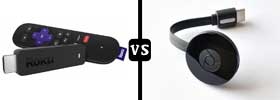
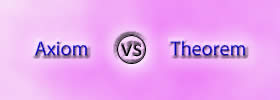
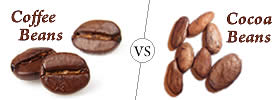

Add new comment